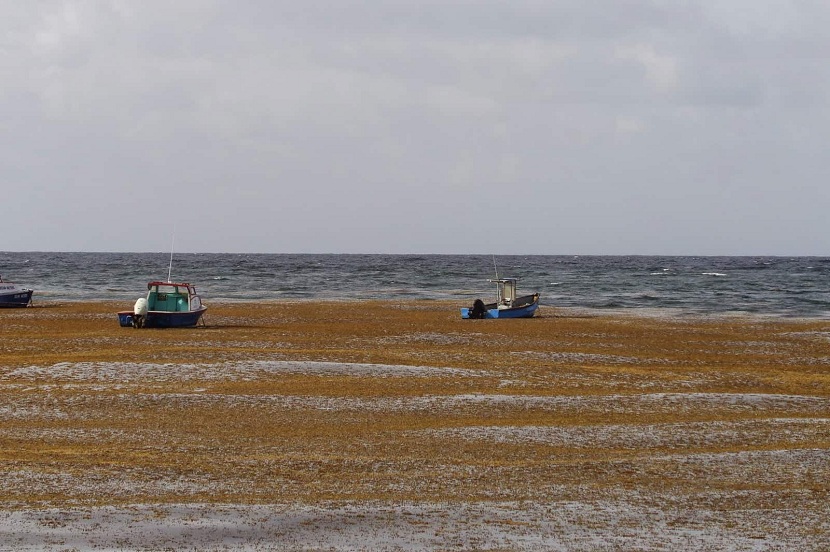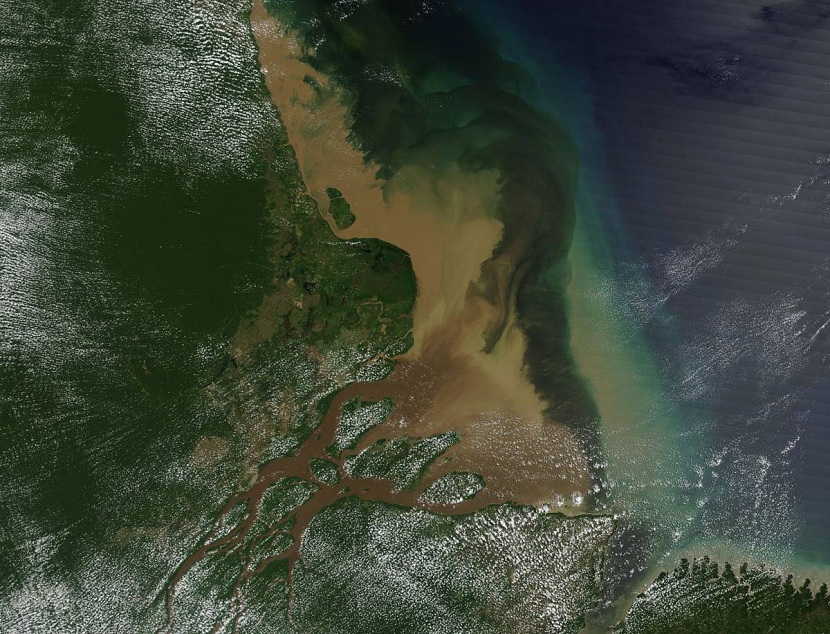
On our planet we find things that surprise us quite a bit. One of them is the Sargasso Sea. It is a sea that does not bathe the coasts of any country. That is, we are talking about a sea that has no coast. It is unique in the whole world and is located in a region of the Atlantic Ocean. Its name is due to the fact that it houses a large quantity of algae of the genus Sargassum. These areas can be seen with relative frequency floating on the surface of the waters.
In this article we are going to tell you all the characteristics and curiosities that the Sargasso Sea has. If you want to know more about this sea different from the rest, this is your post.
Key features

This type of sea has an oval, elliptical shape. It is found in the North Atlantic Ocean area. In the western part is the so-called Gulf Stream and to the east of the currents of the Canary Islands. It has dimensions of 5.2 million square kilometers, being 1.107 kilometers wide and 3.200 kilometers long. The only piece of land that exists in the interior of this sea is the Bermuda Islands.
It is characterized by being a sea where there are hardly any very rough ocean currents. That is, it is considered a relatively calm sea. It is surrounded by ocean currents that flow from north to south and from east to west. It does not have a very abundant rainfall regime and, therefore, has one of the highest salinity levels in the entire Atlantic Ocean. If the rains do not renew the sea water with fresh water, the salinity level will increase to the levels of the Sargasso Sea.
Gentle winds and fairly warm and clear waters are continuously recorded. It is the Gulf Stream that prevents hot water from entering the Sargasso Sea and colder water overflows out of its limits. It has a variable depth that It ranges from 1.500 meters deep in the areas most over eras and in other areas it reaches 7.000 meters.
This sea was discovered remotely in the XNUMXth century. The different Portuguese explorations are those that revealed the entire North Atlantic and found the Azores islands. The first to mention this area was Christopher Columbus. He passed through it during his journey that led him to discover the American continent.
Formation of the Sargasso Sea

Because it is part of the Atlantic Ocean, this sea is associated with its formation. Its origin will be from different geological processes that have occurred in the crust of the extinct ocean Tethys. This ocean was formed through a rift in the super continent called Pangea. We remember that according to plate tectonics theory all the continents formed a large land mass called Pangea. Starting at convection currents from the terrestrial mantle the tectonic plates could begin to move and giving rise to the different seas and oceans that we know today.
This diet in the Pangea between what is now known as North America and Africa is what caused a space to open that emptied all the water of Tethys and formed the entire northern part of the Atlantic Ocean. The origin of the Sargasso Sea has its place 100 million years ago.
The subsequent fragmentation of the Gondwana during the Middle Cretaceous opened the South Atlantic and the entire ocean grew during the age of the Cenozoic. At the bottom of the islands we see that waters emerge that have been affected by the volcanic activity of the seabed.
In reality this sea is just an anticyclonic gyre in the north-central Atlantic Ocean moving in a clockwise direction. This turn has its origin as a product of all the ocean currents that surround the Sargasso Sea.
Biodiversity of the Sargasso Sea

As it has more unique characteristics compared to the rest of the ocean, it has a rather curious and unique biodiversity. This sea has high salinity and low levels of nutrients. These environmental conditions mean that plankton cannot develop in good quantity. We remember that plankton is an essential part of the life of living beings and of the food chain in the marine environment. Thanks to this in nutrient many species can survive.
The fact that plankton does not exist means that there is not a great biodiversity of fish of other types of animals. For this reason, the Sargasso Sea is known as a marine biological desert. What does proliferate quite abundantly are sargassum, which is where its name comes from. These are floating aliases that remain permanently in the ecosystem, especially in the northern part. These algae arouse a great fascination among biologists.
Sargasso are forming large patches in which we can find them floating on the surface and, due to the effect of the currents turning in a clockwise direction, we can see that the materials are concentrated in the center. This is also due to their own gas-filled bladders. These areas where sargassum is stored make up more than 60 species of living beings, Among which are small crabs and fish such as bluefin tuna.
Due to the particular conditions that this sea has with respect to the rest of the waters of the Atlantic Ocean, 10 endemic species grow and inhabit among the floating algae forests. Among these endemic species we have the following: the crab Minutus plans, the shrimp Latreutes fucorum, the fish Syngnathus pelagicus, the anemone anemonia sargassensis, the mollusk Scyllaea pelagica, the snail Melanostoma lithiopa, amphipods pelagic sunampithoe y Biancolina brassicacephala y Hoploplana grubei, a flatworm.
Apart from these endemic species we can recognize another 145 species of invertebrates that live in an association with sargasso.
I hope that with this information you can learn more about the Sargasso Sea and its curiosities.